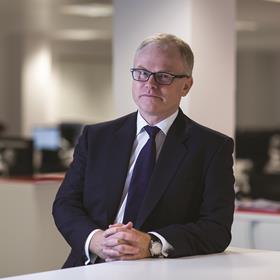Easing quietly out of DHL’s base in Purfleet since late last year, the Volvo FL Electric 4x2 rigid vehicle has the capacity to run for 120 miles and can carry a maximum of 12 pallets and a weight of up to six tonnes. It is also the first fully electric 16-tonne vehicle in the UK, marking a major step forward in the decarbonisation of last-mile delivery.

And it’s not just DHL that is driving change in the logistics world: its competitors have announced a range of innovations, too. Developers and investors have launched their own initiatives, triggering an overall seismic shift in the pace of progress towards net zero.
Industrial property has traditionally been slower to pick up the sustainability mantle. Now, it is making up for lost time – fast and in a collaborative way.
Ford is working with logistics group Hermes on an ingenious system that identifies the optimum location for delivery vans to park so that the final leg of multiple deliveries is completed on foot.
Ocado is trialling electric-assisted and pedal-powered vehicles including electric refrigerated vans that can travel up to 40 miles.
DPD is adding a new green service that will see it offer zero- and low-emission delivery to 25 of the largest towns and cities by 2025, promising an 89% reduction in carbon emissions.
And London courier company Absolutely has launched its Eco Hub, a zero-emission-focused courier depot in Holborn, offering a temperature-controlled and ambient fulfilment location for its fleet of 30 e-vehicles.
Retailers are also flying the sustainability flag through their distribution networks with Zalando offering 80,000 eco-friendly products and John Lewis targeting zero emissions in 15 years.
The ‘E’ is extending into the ‘S’ of ESG. Warehouse occupiers are working with owners to enhance facilities for their staff, and whereas 20 years ago a kickabout in a yard would have filled a lunch break, our portfolio now includes running tracks, biodiverse pocket parks, wellness areas and climbing walls.
Competitive advantage
This is not completely altruistic. The rise of ecommerce has meant more competition for staff in warehouses, so providing best-in-class workplaces is a competitive advantage.
Tech is increasingly playing an active role. At SEGRO, we are using smart data streams to provide useful air quality information to our customers.
We have also relaunched our Responsible SEGRO initiative with an environmental pillar to achieve net zero by 2030.
At our latest scheme in Tottenham, buildings are designed to net zero energy standards for base build and energy supplies are sourced from renewables on and off site to achieve net zero carbon in operation.
But as a sector, it is crucial we don’t just focus on new developments. Through the refurbishment of a unit at Premier Park in Park Royal, we’re trying to challenge ourselves on existing space, too – saving 261,000 litres of water a year through recycling as an example.
Covid has forced wellbeing and sustainable buildings to the top of customer agendas. This is, and will continue to be, reflected in enhanced performance for the most sustainable logistics assets.
Andy Gulliford is chief operating officer at SEGRO





























No comments yet